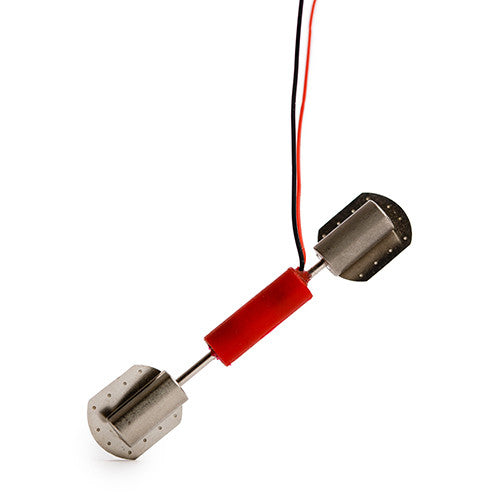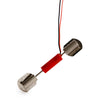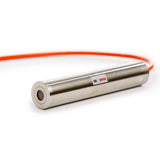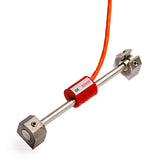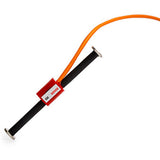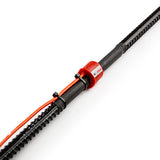Geosense VWS-2020 Spot Weld Strain Gauges
0,00 NOK
Geosense VWS-2020 series vibrating wire strain gauges are designed primarily to measure strains on the surface of steel structures but may also be used on other types of material. They are available in two versions: gauge with integral coil housing or gauge only with separate coil housing.
- Three available models to suit specific installation locations and types
- Compatible with any logging system with vibrating wire inputs
- High accuracy and reliable long-term performance
- Vendor: Geosense
Description
Geosense VWS-2020 series vibrating wire strain gauges are designed primarily to measure strains on the surface of steel structures but may also be used on other types of material.
The gauge consists of two end blocks with a tensioned steel wire between them. The end blocks are attached to stainless steel tabs which may be attached to steel structures by spot welding or, using alternative end blocks, bonded or grouted.
Precision tensioning is carried out on site using a special tensioning jig and the gauge can be set for compression, tension or at mid-point.
The strain gauge operates on the principle that a tensioned wire, when plucked, vibrates at its resonant frequency. The square of this frequency is proportional to the strain in the wire.
Around the wire is a magnetic coil which, when pulsed by a vibrating readout or data logger interface, plucks the wire and measures the resultant resonant frequency of vibration.
As the steel or other surface undergoes strain, the end blocks will move relative to each other. The tension in the wire between the blocks will change accordingly, thus altering the resonant frequency of the wire.
VWS-2020 strain gauges are available in two versions:
Model VWS-2020 consists of the gauge plus a separate plucking coil housing which is placed over the top of the gauge and secured using stainless steel straps. The plucking coil housing is made from tough, corrosion resistant plastic and also acts as protection to the gauge. It can also be used as a portable readout unit.
Model VWS-2025 consists of an integral coil pluck housing which is encapsulated around the gauge.
Model VWS-2026 is the same as 2025 except the end blocks have pins which are designed to be grouted or bonded into holes drilled into the material under test.
For Models VWS-2025 & 2026, a separate cover plate is placed over the gauges to protect them and is secured using stainless steel straps.
VWS-2020 vibrating wire strain gauges may be read by the VW-2106 or any vibrating wire readout device and may be readily data logged using the Campbell Scientific CR-series, Cautus Geo’s Cautus Logger CL1 or any other data loggers with vibrating wire interface modules.
Vibrating wire strain gauges output a frequency signal and are therefore insensitive to resistance changes in connecting cables caused by contact resistance or leakage to ground.
Cable may be readily and simply extended on site without special precautions. Gauges may be read up to 1000 meters away from their installed location without change in calibration.
- Fixing method: VWS-2020: spot welding; VWS-2025: spot welding; VWS-2026: bond/grout
- Coil type: VWS-2020: separate; VWS-2025: integral; VWS-2026: integral
- Gauge length: 49 mm
- Overall length: 65 mm
- Resolution: 0.4 µε
- Strain range: 3000 µε
- Accuracy: ±0.1% to ±0.5% FS
- Non linearity: <0.5% FS
- Operating temperature range: -20 to +80°C
- Frequency range: 1500-3500
Related Products


